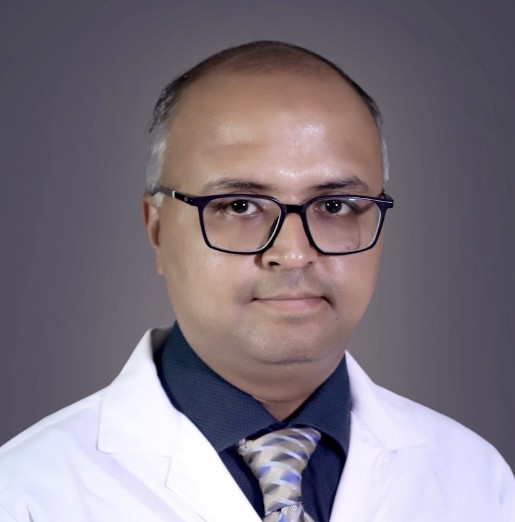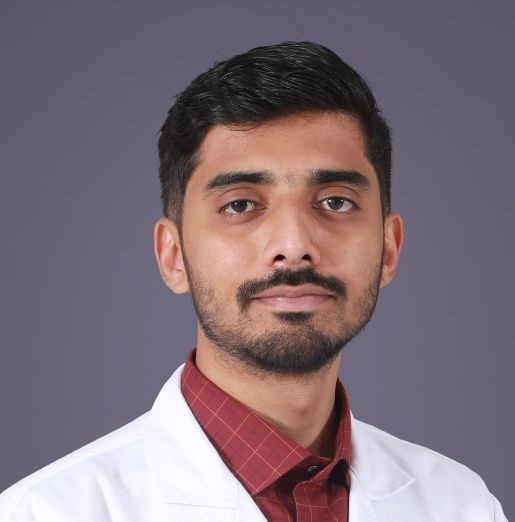Our Critical & Intensive Care team focuses on delivering caring medical help. They use the latest guidelines and maintain top global practices. We run various specialised units designed to handle specific needs in intensive care, including:
- Cardiac Intensive Care Unit (CICU)
- Cardiothoracic Intensive Care Unit (CTICU)
- Cardiovascular Intensive Care Unit (CVICU)
- Medical Intensive Care Unit (MICU)
- Neuroscience Intensive Care Unit (NSICU)
- Surgical Intensive Care Unit (SICU)
- Transplant Intensive Care Unit (TICU)
Intensive Care Units
We manage multiple intensive care units that offer skilled care to individuals dealing with serious illnesses, severe injuries, or healing after major surgeries. Each ICU team is made up of doctors, nurses, and other necessary staff members. They focus on critical care medicine and also handle areas like neurology, anesthesiology, and internal medicine.
Doctors team up with critical care nurses, respiratory therapists, physical therapists, case managers, and social workers. They work together to give patients the care they need.
The progressive care and intensive care units in our hospital work on advanced ways to save lives and provide protection. They look after patients dealing with severe illnesses, critical injuries, or recovering from major surgeries. The ICU teams include doctors, nurses, and other healthcare workers, who all receive special training in critical care medicine along with their main fields such as internal medicine, neurology, or anesthesiology.
Setting New Standards in Critical Care Medicine
In India, specialists must complete extra certification in critical care once they finish training in their primary field. Our doctors have achieved this additional qualification after focusing on areas like anesthesiology, internal medicine, or surgery. Some of our consultants have also trained and worked in countries like the UK or the USA. They return with international expertise using it to improve and level up healthcare back home.
We prepare our critical care nurses to ensure patients receive the best care possible.
Our doctors hold certifications and possess skills in anesthesiology, internal medicine, neurology, and heart surgery. They understand critical care medicine. We collaborate across various medical fields to give top-notch care. Our critical care nurses train to manage the challenges of the ICU and bring both expertise and experience to their roles.
Rapid Response Team (RRT)
An RRT team has a critical care nurse, a nurse practitioner, a respiratory therapist, a specialist doctor, and a duty doctor. An ICU consultant leads the team. The Critical Care unit offers this as an Outreach service. They step in when staff calls them to evaluate and treat unstable patients in the ward. They decide if the patient needs stabilisation in the ward or transfer to the ICU. This system helps lower the risk of ward patients facing cardiac arrest. A ward nurse triggers the RRT using patient scores taken from trusted scoring tools.
When necessary, the RRT can perform emergency procedures right at the patient’s bedside, like:
- Provide advanced cardiac life support
- Set up arterial lines
- Carry out electrical cardioversion
- Insert central venous lines
- Place chest tubes
- Do lumbar punctures
- Perform abdominal fluid drainage (paracentesis)
- Handle thoracentesis procedures
- Perform tracheal intubation
- Deliver vascular access
The Vascular Access Service (VAS) team
This group includes specialists who work on placing and managing indwelling catheters. They follow proven methods to reduce risks like infections, blood clots, or incorrect placement of central lines. VAS aims to boost patient care and make processes smoother. The team is divided into three focused sections dedicated to vascular access:
Central Venous Access Service: Doctors lead this section to put in temporary central lines, PICCs and HD catheters.
Peripheral Venous Access Service: Either senior nurses or doctors head this team. They handle bedside placement of ultrasound-guided peripheral lines and put effort into proper maintenance and teaching.
Vascular Access Service Tunnelled (VAST): Doctors specialising in surgery and interventional radiology make up the VAST team. They handle the placement of tunnelled catheters such as permacath, to support dialysis or give medications over a long time.
Treatments and Procedures in the ICU
1. Airway and Breathing Support
- Airway management/Intubation – A doctor inserts an endotracheal tube into the throat to assist with breathing.
- Mechanical ventilation – Machines provide breathing support to patients unable to breathe.
- Tracheostomy – Surgeons make an opening in the neck to create an airway for patients needing long-term breathing assistance.
- Therapeutic bronchoscopy – This procedure clears mucus blockages in the airways or stops internal airway bleeding.
- Diagnostic bronchoscopy – Doctors perform this procedure to check the airways or gather fluid or tissue samples. Thoracocentesis involves using a needle or tube to take out extra air or fluid from the chest to help with breathing.
2. Watching the Heart and Its Functions
Doctors check how the heart works to find and solve problems such as abnormal rhythms or clogged arteries. They gather information on the heart’s function using machines like ECGs and Holter monitors. To fix certain issues, they may use treatments like angioplasty or pacemakers. These techniques aim to help the heart function again.
- A multiparameter monitor keeps track of heart rate, blood pressure, oxygen levels and breathing speed.
- Doctors insert an arterial line into an artery to check blood pressure with each heartbeat in patients who are unstable.
- A balloon pump provides short-term support to the heart in cardiac patients by helping it pump blood.
- Temporary pacemakers manage abnormal heart rhythms but for a short time.
- A pulmonary artery catheter gathers detailed data by measuring pressures in both the heart and lungs. Based on the patient’s condition, doctors give medicines to widen blood vessels or strengthen the heart’s contractions.
3. Caring for Kidneys and Body Fluid Levels
- Continuous renal replacement therapy (CRRT) – This method provides a slower and more consistent form of dialysis. Doctors rely on it to remove toxins from patients who are too weak to undergo standard dialysis.
- SLED – It means sustained low-efficiency dialysis. This approach supports those who cannot tolerate normal dialysis but are not sick enough to need CRRT.
- IHD – Intermittent hemodialysis is used for those who are stable enough to manage regular sessions.
- Hemodialysis catheter insertion – Doctors insert a catheter to carry out the types of dialysis listed earlier.
- Peritoneal drain insertion – Doctors use it to drain abdominal fluid either to diagnose a problem or to ease the patient’s discomfort.
- Plasma exchange – Doctors replace the patient's plasma part of the blood with donor plasma. They usually carry out this procedure to remove harmful toxins from the blood, extract antibodies or help people dealing with liver problems.
4. Tests for the stomach and intestines
- Upper endoscopy – Doctors pass an endoscope through your mouth to check your esophagus, stomach and the upper section of the small intestine.
- Colonoscopy – This procedure checks the colon and rectum to detect and address problems.
- Sengstaken-Blakemore / Minnesota tube: A balloon inflated with air is used to stop heavy bleeding in patients with major gastrointestinal bleeding.
5. Tests for the Brain and Nervous System
- External Ventricular Drains: Doctors place a thin tube inside the brain’s Lateral Ventricle. This tube helps remove extra fluid from the brain to reduce pressure in the skull. It also lets them check pressure levels inside the skull, so they can spot changes and respond.
- Intraventricular Antibiotics: Doctors use these antibiotics to treat infections in the brain or its fluid.
- Lumbar Puncture: Using a long needle, the doctor aspirates the cerebrospinal fluid (CSF) from the patient's lower back. This procedure helps find problems like infections or swelling in the brain (encephalitis).
- Transcranial Doppler Test: Doctors use a simple ultrasound to monitor how blood moves in the brain. The results help assess the pressure inside the skull.
6. Methods to Use Echocardiography and Imaging
- Transesophageal echocardiography (TEE): Doctors insert a probe into the esophagus to use ultrasound and get clear images of the entire heart.
- Transthoracic echocardiography (TTE): This method uses ultrasound from outside the chest to study how the heart looks and works.
- Fluoroscopy: A real-time X-ray provides moving images of the body's internal structures. Doctors use it during various procedures like inserting medical lines.
- Bubble/Contrast ECHO: Agitated saline is used to detect any unusual pathways or openings inside or outside of the heart. ECHO technicians or cardiologists use this 3D ECHO to get details about unusual valves or chambers.
7. Catheter Placements and Line Procedures
- Central venous catheter placement - Doctors place a tube inside a large vein to give fluids or medications.
- Chest tube placement - This removes trapped air, blood, or fluid from the area around the lungs.
- Foley catheter insertion - A soft tube is put into the urethra to track how much urine the patient produces.
- Nasogastric tube insertion - A plastic tube goes in through the nose or mouth and into the stomach to provide food for patients who cannot eat because of sickness.
8. Critical Interventions and Emergency Care
- Cardiopulmonary resuscitation (CPR) – People use this life-saving method in emergency situations to restart the blood circulation and breathing.
- Extracorporeal membrane oxygenation (ECMO) – This life support apparatus provides assistance when both the heart and lungs stop functioning.
- Postoperative care – Medical staff give post-procedure care to help you recover and keep track of your condition after surgery.
Common Diseases Treated at the Department of Intensive Care, KIMS Hospitals, Electronic City
1. Breathing-related Illnesses
- Acute respiratory failure – The lungs fail to deliver enough oxygen or expel carbon dioxide.
- ARDS (Acute Respiratory Distress Syndrome) – Severe inflammation in the lungs leads to fluid buildup and makes it difficult to breathe.
- Pulmonary embolism – A blood clot blocks lung arteries, reducing or blocking oxygen and blood flow.
- Pulmonary fibrosis – Scarred lung tissue limits the ability to breathe.
- Pneumonia – An infection inflames and swells up the lungs' air sacs.
- Influenza (flu) – A virus attacks the respiratory system and can lead to problems like pneumonia.
- COPD: Flare-ups of chronic obstructive pulmonary disease.
- Asthma affecting the bronchial tubes.
2. Renal and Hepatic Conditions
- Acute kidney injury (AKI) – Kidneys stop working and allow harmful waste to collect in the body.
- Acute liver failure – The liver stops doing its job, which can turn life-threatening.
3. Cardiovascular and Circulatory Issues
- Cardiogenic shock – The heart does not pump enough blood, which damages other organs.
- Heart failure – The body does not get enough blood because the heart cannot pump it.
- Shock (general) – low blood flow happens due to various causes.
- Septic shock – A severe drop in blood pressure due to a major infection.
- Sepsis – The body's response to an infection harms its organs.
4. Brain and Nerve Issues
- Cerebral oedema – Fluid collects in the brain resulting in the tissue to swell.
- Intracranial haemorrhage – Bleeding occurs inside the skull and could damage the brain.
- Stroke – Blocked blood flow to the brain causes injury to its tissues.
- Meningoencephalitis – The brain and spinal cord get infected.
5. Body Chemistry and Genetic Disorders
- Congenital metabolic disorder – A genetic condition present at birth disrupts how the body processes nutrients and energy.
- Metabolic disorder – A set of issues that interferes with how the body carries out chemical reactions.
- Drug overdose – Consuming excessive amounts of a drug harms the body and interrupts how its systems function.
6. Conditions Affecting Multiple Organs and Severe Health Complications
- Multiple organ failure – the functional decline of two or more body organs leads to them not functioning as they should.
- Post-intensive care syndrome (PICS) – Challenges with physical abilities, mental clarity, or emotional health arise after an ICU stay.




